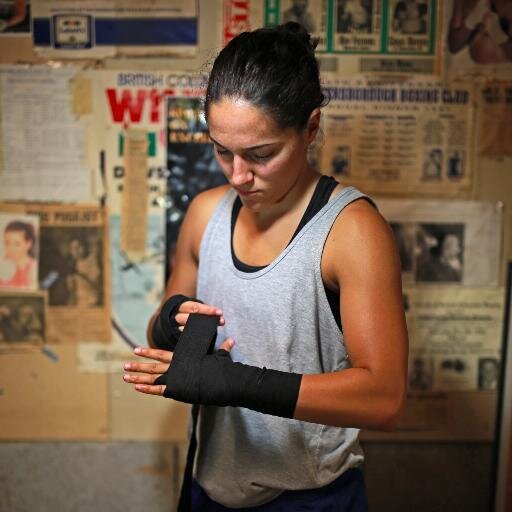“You’re in shape… until you aren’t.”
Every boxer knows the feeling. You think you’re in shape, you’re sparring well, and then by Round 2 your legs feel like concrete. The problem isn’t effort. It’s the wrong kind of conditioning.
In combat sports, the difference between being fit and being fight ready is small but critical. Fighters often equate exhaustion with improvement. But fatigue is not the goal. The goal is to develop a system that lets you recover, repeat, and stay sharp under stress.
True conditioning teaches your body how to sustain power and recover faster between bursts. It builds the capacity to deliver the same output over and over without falling apart technically.
Mistake #1: Living in the “No-Adaptation Zone”
Most fighters train at one speed all the time. The intensity is too high to truly build aerobic qualities, yet not high enough to improve anaerobic power. This middle zone feels hard but does not create meaningful adaptation.
Training in this gray area leaves you constantly tired without improving the key factors that drive endurance. The aerobic system is the foundation for every other energy system. It is what allows you to recover between flurries, maintain composure, and control your pace.
When the bulk of training sits around 80 to 85 percent of maximum heart rate, the heart and muscles are working, but they are not being pushed to develop either side of the spectrum.
Fix:
Include one dedicated aerobic session each week. Keep the effort at a comfortable but steady pace where you can still breathe through your nose.
25 to 30 minutes at 65 to 75 percent of maximum heart rate, or RPE 4 to 5.
Use light jogging, a spin bike, or shadowboxing flow work.
These lower-intensity sessions build the foundation that makes every other type of conditioning more effective later in camp.
Mistake #2: Mistaking Fatigue for Progress
If every session leaves you completely drained, you are not building capacity, you are burning it.
Fatigue by itself does not equal progress. When you constantly push to exhaustion, your coordination drops, timing slows, and recovery between rounds suffers.
Conditioning should improve the ability to produce high effort repeatedly, not the ability to survive pain. The aim is quality effort, not constant exhaustion.
Fighters often overload glycolytic, or medium-duration, efforts. They push too hard for too long and never develop the shorter, high-power system or the longer aerobic system that supports it. The result is a strong first thirty seconds and then a quick drop-off in speed and output.
Fix:
Introduce short, high-quality power intervals that target your explosive energy system.
Perform 8 to 10 seconds of all-out work such as a bike sprint, heavy bag flurry, or sled push.
Rest for 80 to 100 seconds at an easy pace before repeating.
Complete 6 to 8 total efforts.
These efforts improve maximal power and nervous system efficiency while allowing full recovery between reps.
Mistake #3: Ignoring the Aerobic Engine
The aerobic system is what keeps fighters explosive through multiple rounds. It is also what allows the body to recover between rounds and between training sessions.
Aerobic training does not make a fighter slow. It develops the internal engine that supplies energy to every burst and every exchange. A well-developed aerobic system improves the ability to replenish ATP, clear hydrogen ions, and use lactate as a fuel source during sustained work.
The common idea that fatigue is caused by lactic acid buildup is outdated. Lactic acid does not actually accumulate in the muscles. Instead, it separates into lactate and hydrogen ions, and the resulting increase in acidity contributes to fatigue. Aerobic training improves the body’s ability to manage that acidity and maintain performance over time.
Fix:
Use structured aerobic capacity intervals once or twice a week.
Work for 2 to 3 minutes at 80 to 90 percent of maximum heart rate or RPE 6 to 7.
Recover actively for 2 to 3 minutes until your heart rate drops below 130 beats per minute.
Repeat 4 to 6 rounds.
This type of interval work develops both delivery and utilization of oxygen, helping you stay relaxed and efficient even at higher outputs.
Why Smart Conditioning Wins Fights
The best-conditioned fighters are not always the ones who look the fittest in training. They are the ones who can stay calm, explosive, and efficient no matter how chaotic the fight becomes.
That calmness is a physiological skill. It comes from balancing the aerobic system that drives recovery, the anaerobic system that fuels sustained power, and the alactic system that supports short, explosive actions.
Smart conditioning develops all three systems in the right sequence and with the right intent. Build the base first, layer power on top, and taper the total load before competition.
Train Systems, Not Just Willpower
The difference between being in shape and being ready to fight is not about effort, it is about precision.
Conditioning should make you faster, more efficient, and more durable. It should leave you confident that your body can keep up with your skill. Hard work matters, but only when it builds something specific.
“Hard work is only as good as what it builds.”
— Joel Jamieson
Take the Guesswork Out of Your Conditioning
Knowing what to train is only half the battle. Knowing when and how to train each energy system is what separates a well-conditioned fighter from a tired one. A structured plan designed around your schedule, fight calendar, and current fitness level turns theory into progress.
If you’re serious about improving your fight conditioning, click here to explore our custom programs for fighters— designed to help you train smarter, recover faster, and perform your best when it matters most.
References
Jamieson, J. (2009). Ultimate MMA Conditioning.
Bott, C. (2023). Uncovering Limitations in Work Capacity.
Robergs, R. et al. (2004). “Biochemistry of Exercise-Induced Metabolic Acidosis,” American Journal of Physiology.
Brooks, G. et al. (2005). Exercise Physiology: Human Bioenergetics and Its Applications.



